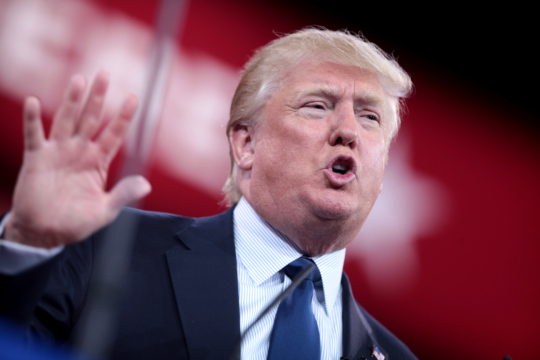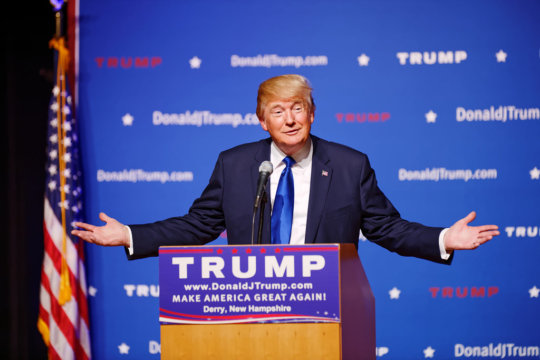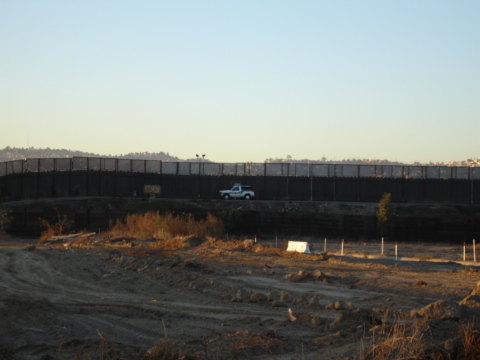
Surprises on the Road to the White House
For those who believed that Clinton and Bush would cruise to be the nominees for US president, this summer was full of surprises.
On October 2nd, the murder of journalist Jamal Khashoggi prompted worldwide outrage and a business backlash that has refocused attention on the safety of journalists. Although this specific incident has garnered global attention, killing a media critic on foreign soil is just another (admittedly extreme) manifestation of the troubling escalation of violence against journalists and threats against freedom of the press.
In light of the Khashoggi killing—which the CIA has now reportedly concluded was ordered by the Saudi crown prince, Muhammed bin Salman—it is useful to revisit the security environment of journalists in the Americas as well. Evidence from the International Press Institute shows that Latin America and the Caribbean region was the deadliest in 2017 for journalists, with more than a quarter of murders taking place in the region. IFEX expressed concern about increasing incidence of aggression and intimidation of journalists by government officials in various countries across the region, coupled with the inadequacy of government mechanisms for their protection. The increasingly hostile environment towards journalists in Latin America points to an acute need for increased government resources toward their protection as well as an emphasis on rhetoric that defends freedom of expression and the press.
Although violence against journalists in Latin America may not be the product of assassinations sponsored directly by national heads of state, governments are implicated by commission or omission in many crimes against media workers. Mexico, which has become the most dangerous country for journalists in the Americas, is a case in point. The appalling level of impunity for violence against journalists in Mexico means that , a reality that invites the use of violence to silence journalists who report on organized crime and corruption. According to Reporters Without Borders, public officials implicated in such crimes—particularly local officials acting in collusion with criminal organizations—often have the power to subvert or shut down investigations, to the distress of the victims’ families. In many cases, Mexican journalists who don’t want to put their jobs or their safety at risk simply self-censor. 68% of Mexican journalists reported self-censoring in order to either avoid assassination or protect the income of their outlets. When they refuse to do so, powerful government figures have at times used intimidation tactics to silence and censure them. For example, in March 2015, two Mexican investigative journalists who exposed the “Casa Blanca” scandal implicating President Enrique Peña Nieto and his wife were fired from MVS Radio, a privately owned radio station. The firings gained international attention when a fellow MVS host, renowned journalist Carmen Aristegui, was also fired from the station for coming to their defense. The incident underscored the lack of autonomy of many Mexican media outlets due to their financial dependence on government advertising revenue (Aristegui returned to national airwaves about a month ago, and received a welcoming remark from president-elect Andres Manuel López Obrador.)
Mexico has taken certain laudable if insufficient steps to address violence against journalists. For example, in 2010, Mexico named a Special Prosecutor for Crimes Against Freedom of Expression (FEADLE), who is supposed to undertake investigations into attacks against journalists and crimes against freedom of expression. Two years later, Mexico created the Mechanism to Protect Human Rights Defenders and Journalists, which in theory provides protective measures to over 700 journalists and human rights defenders under imminent threat of violence. However, the Mechanism is underfunded and understaffed, and FEADLE is, according to a former official at the Inter-American Commission on Human Rights, “a simulation” of justice, having failed to achieve a single conviction for the murder of a journalist between its inception and January 2018. The establishment of agencies tasked with protection and investigation means little if they are not given the resources and training necessary to effectively achieve their mandate.
However, in a climate of increasing aggression towards freedom of the press, even normative steps toward the protection of the press are better than none at all. Although imperfect, national protective and investigative mechanisms for journalists are disappointingly rare: only Colombia (2000), Honduras (2015), and Brazil have created mechanisms for the specialized protection of journalists. As concluded by the Colombian Foundation for Press Freedom (FLIP), the establishment of these mechanisms is essential because they clarify that it is the State’s responsibility to defend press freedom, and raise the political costs of not doing so.
Because of the State’s failure to address impunity, NGOs have attempted to take the protection of journalists into their own hands. For example, in 2015, Reporters without Borders helped the Council of Europe launch the “Freelance Journalist Safety Principles” to educate journalists on self-protection, like conducting a risk assessment before entering a hostile environment. The Knight Center for Journalism in the Americas and the International Women’s Media Foundation (IWMF) offers a course providing tools for journalists to assess their own risk, develop a self-protection plan, and offer an understanding of the inter-American legal framework for the protection of journalists. But these measures cannot be effective if States continue to refuse to take responsibility over the defense of freedom of the press within their borders.
The current political climate in various Latin American countries—including Cuba, Nicaragua, Honduras, Venezuela, and Bolivia, among others—poses a direct threat to freedom of expression due to government repression and intimidation. Of particular concern, however, is the potential that elected leaders’ expressed animosity towards the press could provoke additional violence against journalists by private individuals. The situations in the United States and Brazil are noteworthy in this respect.
On numerous occasions, U.S. President Donald Trump has referred to reporters as the “enemy of the American people.” During a campaign-style rally in Missoula, Montana on October 18th, he openly celebrated a congressman for physically assaulting a reporter in May 2017. This inflammatory rhetoric has diminished public faith in the media. According to an Ipsos poll conducted in August of 2018, 48% of Republicans and 12% of Democrats agree that “the news media is the enemy of the American people.” Trump’s particular attacks on CNN may have played a part in inspiring Cesar Sayoc to send a pipe bomb to CNN headquarters in October 2018.
Similar rhetoric was employed by Brazilian president-elect Jair Bolsonaro throughout his presidential campaign. On Twitter, he frequently describes the media as “trash.” Following an October 22nd article by the Folha de Sao Paolo which exposed an illegally funded WhatsApp disinformation campaign designed to get Brazilians to vote for Bolsonaro, the Brazilian then-candidate sent out a video to his supporters stating, “Folha de São Paulo is Brazil’s biggest fake news source.” Patrícia Campos Mello, the reporter who wrote the story, was attacked and threatened on social networks by Bolsonaro’s supporters and decided to block public access to her Twitter account for her safety. She is not the only one endangered by the ripple effect of Bolsonaro’s rhetoric: the Brazilian Association of Investigative Journalism (Abraji) has documented 141 cases of threats and violence against reporters covering the elections, most of them by Bolsonaro supporters.
The rhetoric employed by Trump and Bolsonaro is compounding hostility toward the media, and may be placing journalists at risk. As public officials, Trump and Bolsonaro not only enjoy freedom of expression but also carry an expectation that they will speak about matters of public interest. As the Inter-American Court of Human Rights has found, however, this freedom comes with a duty to refrain from rhetoric that puts the rights of journalists at risk, especially in situations of social conflict that imply a greater risk of words inciting violent action. Trump and Bolsonaro would do well to ponder the fact that the Inter-American Court’s judgment was issued in response to the media-baiting of a leader they would hardly consider a role model: former President Hugo Chavez of Venezuela.
Media and Democracy in the Americas
For those who believed that Clinton and Bush would cruise to be the nominees for US president, this summer was full of surprises.
For anyone still wondering how Donald Trump came to be the Republican Party’s nominee for president of the United States, his surprise visit to Mexico on Wednesday for a meeting with President Enrique Peña Nieto offered some clues.
With a constant stream of offensive and intimidating rhetoric addressed to Mexico, compounded by a mean-spirited and highly contentious set of policy proposals, Trump himself is largely responsible for the sharp deterioration in bilateral ties in the past two years.

